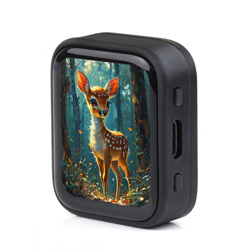- sales/support
Google Chat: zj734465502@gmail.com
- sales
+86-0755-88291180
- sales01
sales@spotpear.com
- sales02
dragon_manager@163.com
- support
tech-support@spotpear.com
- CEO-Complaints
zhoujie@spotpear.com
- sales/support
WhatsApp:13246739196
How to Install Docker on Debian
1 Scope
Platform: RK3328/RK3399/RK3568/RK3588
Operating System: Debian 10, Debian 11
2 Pre-installation checks and preparations
The recommended storage driver for Docker now is Overlay2. However, it may not be possible to install it directly if the root file system is already using OverlayFS. In that case, some adjustments need to be made to the partitions. There are several methods available and we will introduce them separately below. Please choose one according to your needs:
- Method 1
- Stop using OverlayFS on the root file system. This is the easiest way, but the "factory reset" function relies on OverlayFS, so this feature will not work.
- Method 2
- Create an additional partition to mount the /var/lib/docker directory. You need to plan the partition size in advance.
- Method 3
- Mount the /var/lib/docker directory on external storage devices such as USB flash drives and M.2 SSDs. The storage device needs to be formatted in ext4 format. This article mainly discusses the first two methods.
Precautions:
- This operation will erase user data, so it is necessary to backup data in advance.
- You need to update the firmware to a version on or after March 14, 2023, or update the boot.img separately.
- The device node /dev/mmcblkX mentioned in the command is a fictional node and needs to be changed to the real device. The device node for eMMC is /dev/mmcblk2, and for TF card is /dev/mmcblk0.
3 Method 1: Make the root file system not use OverlayFS
- Write specific content to /.init_wipedata and reboot:
sudo passwd root # Create a password for the root user if it hasn't been done before. su - root -c 'echo "overlayfs=disable" > /.init_wipedata' sudo reboot
- After rebooting, use the parted command to view the current partition layout. Normally, you should see that the root system is mounted in ext4 format, not overlay as before:
sudo apt update sudo apt install parted export DEV=/dev/mmcblkX #needs to be changed to the real device sudo parted -s ${DEV} unit MiB print
4 Method 2: Create an additional partition for Docker
- Check the current partition layout
sudo apt update sudo apt install parted fdisk export DEV=/dev/mmcblkX #needs to be changed to the real device sudo parted -s ${DEV} unit MiB print
- Adjust the userdata partition to 8GB
Here, 8GB is used as an example. The partition size can be adjusted according to your needs:
sudo passwd root # Create a password for the root user su - root -c 'echo "overlayfs=enable userdata=8096" > /.init_wipedata' sudo reboot
After reboot, confirm that the partition has been adjusted and you can see that the userdata partition is now 8GB:
export DEV=/dev/mmcblkX #needs to be changed to the real device sudo parted -s ${DEV} unit MiB print
- Create a new partition and format it:
(echo n; echo ""; echo ""; echo ""; echo w) | sudo fdisk ${DEV} NUM=$(sudo parted ${DEV} print | awk 'NF > 1 {p = $1} END {print p}') # Get the index of the last partition sudo mkfs.ext4 ${DEV}p${NUM}
- Mount the partition to the Docker data directory:
sudo mkdir /var/lib/docker sudo blkid ${DEV}p${NUM} # Configure automatic mounting sudo vi /etc/fstab # Add the following content to the end of the file (where UUID needs to be replaced with the actual one). UUID=2efab5a5-8b74-41d2-8747-4c00fff8514a /var/lib/docker ext4 suid,dev,exec,auto,nouser,async,noatime,nofail 0 0 # Enter the following command to mount the partition: sudo mount /var/lib/docker
5 Install Docker Engine
- The docker installer uses iptables for nat, unfortunately Debian uses nftables, here we just setup Debian to use the legacy iptables:
[ -f /usr/sbin/iptables-legacy ] && sudo update-alternatives --set iptables /usr/sbin/iptables-legacy [ -f /usr/sbin/ip6tables-legacy ] && sudo update-alternatives --set ip6tables /usr/sbin/ip6tables-legacy
- Start installing Docker:
sudo apt install lsb-release wget codename=$(lsb_release -c | awk '{print $2}') version=$(lsb_release -sr | cut -d'.' -f1) wget https://download.docker.com/linux/debian/dists/${codename}/pool/stable/arm64/containerd.io_1.6.9-1_arm64.deb wget https://download.docker.com/linux/debian/dists/${codename}/pool/stable/arm64/docker-ce-cli_23.0.1-1~debian.${version}~${codename}_arm64.deb wget https://download.docker.com/linux/debian/dists/${codename}/pool/stable/arm64/docker-buildx-plugin_0.10.2-1~debian.${version}~${codename}_arm64.deb wget https://download.docker.com/linux/debian/dists/${codename}/pool/stable/arm64/docker-ce_23.0.1-1~debian.${version}~${codename}_arm64.deb wget https://download.docker.com/linux/debian/dists/${codename}/pool/stable/arm64/docker-compose-plugin_2.6.0~debian-${codename}_arm64.deb sudo dpkg -i ./containerd.io_1.6.9-1_arm64.deb \ ./docker-ce_23.0.1-1~debian.${version}~${codename}_arm64.deb \ ./docker-ce-cli_23.0.1-1~debian.${version}~${codename}_arm64.deb \ ./docker-buildx-plugin_0.10.2-1~debian.${version}~${codename}_arm64.deb \ ./docker-compose-plugin_2.6.0~debian-${codename}_arm64.deb
Verify if Docker has been installed successfully:
sudo docker infoCheck if it is using the overlay2 storage driver.:
$ sudo docker info | grep storage -i Storage Driver: overlay2
6 Run Docker as a non-root user
sudo groupadd docker sudo gpasswd -a ${USER} docker sudo systemctl restart docker sudo chmod a+rw /var/run/docker.sock
Let’s verify:
docker images
7 Testing Docker: Installing Nextcloud with docker
mkdir ~/nextcloud -p docker run -d -p 8888:80 --name nextcloud -v ~/nextcloud/:/var/www/html/ --restart=always --privileged=true arm64v8/nextcloud
After installation, visit: http://device-ip-address:8888/ on your computer browser to view the nextcloud web page.
8 References
https://docs.docker.com/engine/install/debian/#install-from-a-package




